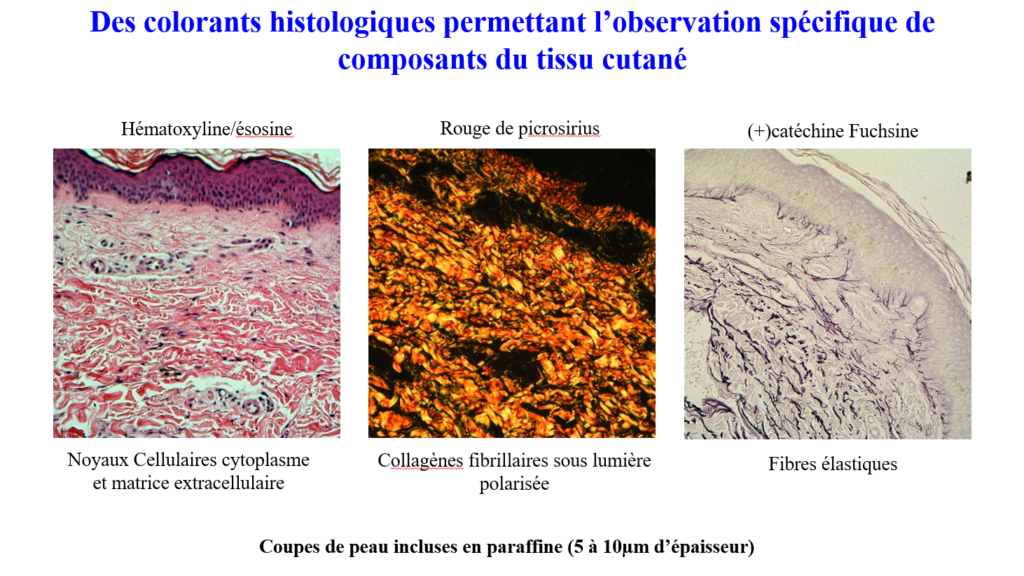
Coup de cœur RESEARCH
Spotlight on rare diseases: hereditary connective tissue disorders
On May 11, 2023, Dr Raed Lattouf successfully defended his doctoral thesis at the Faculty of Dentistry of the Université Saint Joseph de Beyrouth (USJ), an EBI partner. Her research work, initiated under the supervision of Professor Gaston Godeau (Paris Descartes University), was continued in her thesis under the supervision of Professor Nada Naaman of the USJ and Dr Karim Senni, HDR, Head of the Biotechnology Research Axis within our EBInnov® research unit. Raed Lattouf’s work has highlighted the complexity of macromolecular matrix interactions and their control over tissue remodeling in genetic pathologies affecting connective tissues.
Connective tissues are tissues of mesenchymal origin, such as the dermis, bone and vascular tissues, and cartilage, which perform numerous support and mechanical resistance functions. Connective tissues are thus subjected to considerable stress, which they compensate for thanks to the resistance of the macromolecular networks of their extracellular matrix (collagenous, elastic), and their ability to remodel under the control of their cells (fibroblasts, osteoblasts, chondrocytes…). This tissue remodeling is an essential parameter of tissue homeostasis, the dynamic balance between anabolism and catabolism (synthesis vs. tissue degradation, proliferation and differentiation vs. cell death).
Inherited connective tissue diseases are characterized by mutation of one of the extracellular matrix proteins, or of an enzyme involved in their maturation. Multi-systemic, their clinical signs lead to a major alteration in tissue homeostasis, marked by failure of the tissues most subjected to mechanical stress.
Among these rare pathologies (prevalence 1/5000), the Marfan syndromein which fibrillin-1 (a glycoprotein associated with the elastic network) is well characterized, and Ehlers Danlos syndromes today classified into 13 syndromes mainly affecting collagens, enzymes associated with their maturation, or other proteins associated with collagen networks. These syndromes are excellent examples of the relationships between the various players involved in tissue remodeling.
In the majority of cases,Marfan syndrome patients present musculoskeletal (thoracic deformities, elongation of long bones, joint hyperlaxity), vascular (aortic dilatation), ocular (lens ectopia), pulmonary (pneumotorax) and cutaneous (atrophic striae, hyper-extensibility) disorders.
Symptoms associated withEhlers Danlos syndromes are highly varied, with clinical signs more or less present depending on the syndrome at joint level (hyperlaxity, chronic pain), vascular level (risk of aneurysm rupture), or skin level (hyper-extensibility, delayed healing).
As stated by Holbrook and Byers in 1989, the skin is considered an open window for the study of these connective systemic pathologies. A histological study of the skin of these patients enables us to specify conjunctival damage.
Raed Lattouf’s work began with a study of skin biopsies from patients of various ages suffering from classical (cEDS), vascular (vEDS) and hypermobile (hEDS) Marfan and Ehlers Danlos syndromes, collected for anatomopathological diagnosis by dermatology departments (Hôpital Saint Louis, AP-HP, Pr C Blanchet Bardon). Experiments then focused on studying the behavior of dermal fibroblasts from two patients suffering from classic Ehlers Danlos, in order to specify the ability of these cells to remodel their tissue environment. These fibroblasts, supplied by the Dermatology Department of the Avicennes Hospital (AP-HP, Pr F Caux), were cultured in reconstructed connective tissue.
The use of histological stains such as picrosirius red for collagen fibers and (+) catechin-fuchsin for elastic fibers, combined with histomorphometric analysis, showed simultaneous alterations in collagen and elastic networks in all the syndromes studied. Immunohistological studies detecting two major proteins in these networks (fibrillin-1 and collagen III) confirmed the histochemical results. In conclusion, these structural studies have shown that whatever the primary genetic disorder, a collagenopathy is also an elastopathy, and vice versa.
The nature of the alterations also suggests a degenerative process resulting from increased degradation of extracellular matrix components. In fact, whatever the syndrome and for all the patients studied, anarchic expression of matrix metalloproteinases, essential players in tissue remodeling, was observed.
To take this a step further, fibroblasts from cEDS patients were cultured in an in vitro reconstructed dermis model and compared with fibroblasts from healthy subjects. After 3 weeks in culture, the reconstructed dermis showed an altered collagen network, characterized by numerous areas of lysis mimicking the disorders observed in skin biopsies from patients with the same syndrome. These reconstructed pathological dermis were also associated with overexpression or overactivation of certain matrix metalloproteinases, as observed ex-vivo.
In conclusion, these studies and those previously carried out by Prof. Godeau’s team show that alteration of an extracellular matrix molecule affects not only the macromolecular networks directly associated with it, but also connective tissue as a whole. These structural defects send the wrong signals to the cells, which then adopt inappropriate behaviours, sustainably altering tissue remodelling towards a degenerative process triggered by the overexpression of their proteolytic potential. These results suggest that therapies involving the control of proteolytic activities could provide relief for patients, or slow down the systemic tissue degeneration observed in all these pathologies.

***
To find out more :
Keywords : Marfan syndrome, Ehlers Danlos syndromes, collagens, elastic fibers, matrix metalloproteinases, histomorphometry, picrosirius red, (+) catechin fuchsin
***











